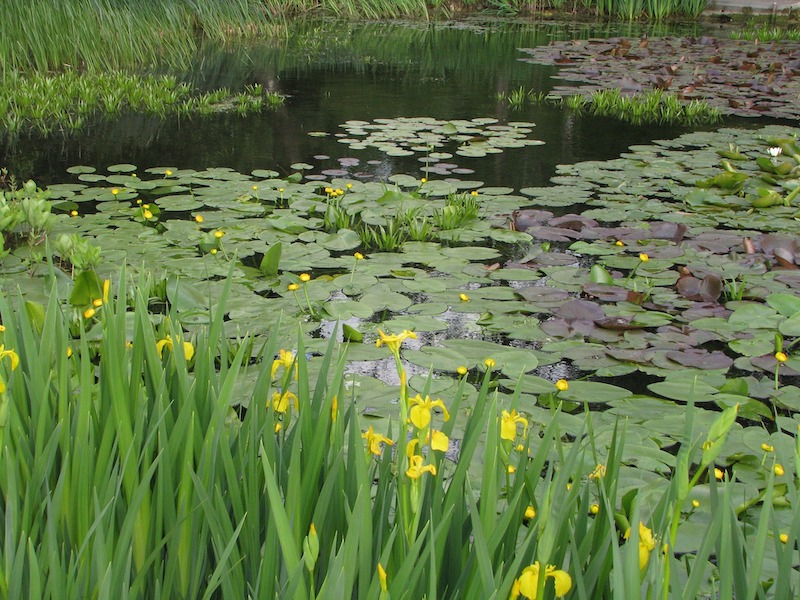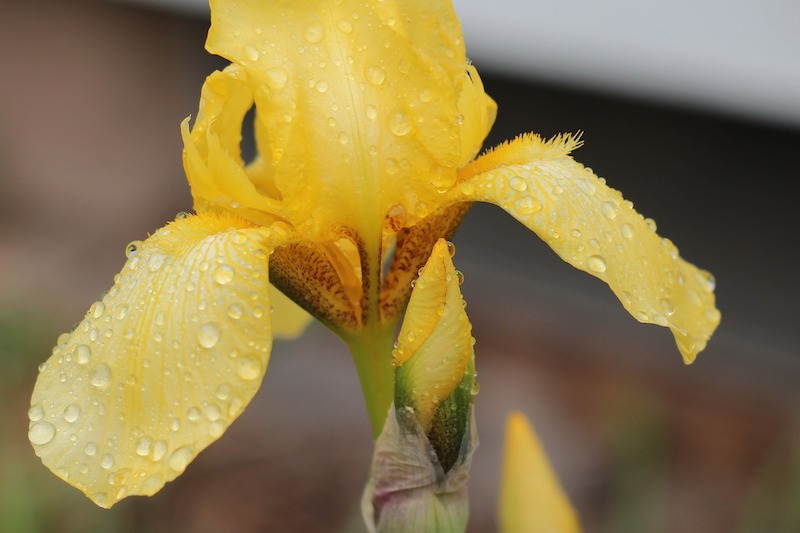Iris is a versatile plant genus that encompasses drought-tolerant varieties along with water lovers that thrive in boggy areas alongside streams and ponds. The showy and regal bearded iris (Iris germanica) and all of the cultivars of Hybrid Dutch bulb iris (Iris hollandica) thrive in sunny locations with fast-draining soil that stays on the dry side. The beardless pond and streamside-loving irises, Iris versicolor and I. pseudacorus prefer much damper soil. Two other beardless types, Siberian and Japanese iris, do not mind standing water. Both types have a more fibrous root system, which grows best with access to moist soil at all times. Providing the correct watering routine for each variety ensures that the plants remain vigorous growers and can withstand any threats from pests or disease.

How To Tell If Iris Needs To Be Watered
All varieties of iris have the same basic structure of fan-shaped foliage growing from a rhizome or a bulb. The sturdy, thick leaves rarely show the need for watering like other plants. If the leaves are turning yellow with brown spots or other markings, your iris may have a fungal or bacterial infection. A better indicator of the need for watering is the state of the soil that the iris is planted in. Allowing 2-3 inches of the topsoil to dry out is key to keeping beardless irises from being overwatered. Water when this top layer feels dry to the touch. Flowers may be another indicator of the need for supplemental watering. Look for smaller buds or flowers that fail to open properly or fully.

How Often To Water Iris
Iris will require consistent watering for the first 1-2 years until the plant is fully established. Allow for one inch of water from either natural rainfall or supplemental watering. Keeping the foliage as dry as possible also protects the plants from fungal and bacterial infection. Using soaker hoses or drip irrigation makes watering much more efficient and budget friendly. Japanese and Siberian irises will appreciate regular watering at all times if they are not planted near a stream or pond.
Established bearded and beardless irises are usually drought tolerant after they mature. Often supplemental watering is only needed during prolonged periods of hot, dry weather. If you garden in a climate that has humid and wet summers, watering may not even be needed for weeks at a time. Overwatering in humid wet conditions is much more of a concern. Bulb-grown iris is also very drought tolerant after establishing in the garden. These types are low maintenance and perfect for rock and alpine gardens. Iris versicolor and I. pseudacorus are best planted in soils that stay boggy throughout the year.
Most varieties, especially the Dutch hybrid cultivars, make for great container plants and companions for a mixed seasonal planting. Water these plants as often as you would any other potted outdoor plant. Allow the top 2-3 inches of potting mix to dry between waterings. Ensure the pots have excellent bottom drainage and that the potting mix is lightweight enough to provide good air circulation for the root zone.

Best Time To Water Iris
Water irises as early in the day as possible. Watering the soil while it is still cool and damp from the night will help the water soak in deeper and faster. Foliage that gets wet from overhead watering will have enough time to dry fully before nightfall. Gardeners in the warmer growing zones will need to continue watering iris through the fall and winter as long as temperatures remain above 45 degrees Fahrenheit. Allowing the plants to dry too much over winter will result in poor growth and blooming the following spring.
How to Water Iris
Step 1 - Know what variety of iris you are growing.
Bearded and bulb-type irises can tolerate drier soils than beardless types.
Step 2 - Keep foliage as dry as possible
Using soaker hoses or drip irrigation will ensure that the foliage stays dry. Wet foliage is more inviting for fungal and bacterial diseases. Overhead watering quickly spreads any fungal spores to other parts of a plant or neighboring plants.
Step 3 - Space watering sessions to allow for drying in between.
Protect bearded iris from overwatering by allowing time for the soil to dry between sessions.
Iris Watering Tips
- Do not use overhead watering
- Only water when the soil is dry 2-3 inches below the surface
- Identify which iris variety you are growing
- Continue watering in the winter when temperatures remain above 45 degrees F
 |
Author Robbin Small - Published 4-18-2023 |
